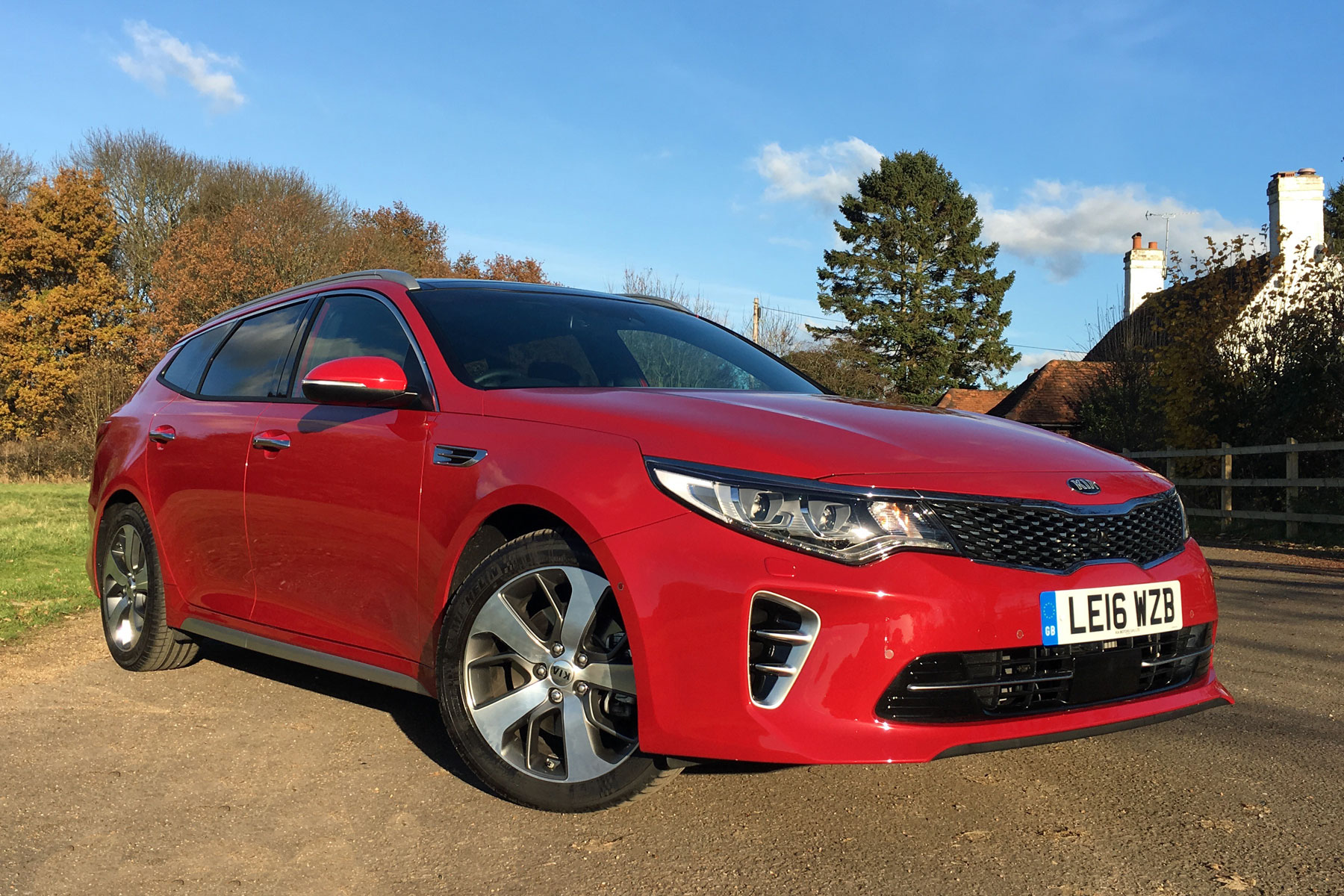
Wagons are cool, right? There’s a definite trend towards practicality among new car buyers in the UK. Just look at the success of crossovers, and we’re increasingly buying more estates than conventional D-segment saloons.
But, until now, Kia has never sold an estate version of its Mondeo-rivalling Optima. And that might go some way towards explaining why it’s never sold particularly well.
- UK Car of the Year 2017 winners revealed
- Audi A4 1.4 TFSI 150 (2016): long-term review
- Read another car review on Motoring Research
Having cashed in on its seven-year warranty and exceptional value for money, Kia (along with sister brand Hyundai) is gradually attempting a move upmarket. When it revealed its Sportspace concept, it was clear change was on the horizon.
Not only was the Optima-previewing concept absolutely drop-dead gorgeous (something the Optima has never previously been), it was also shooting brake in shape.
When Kia revealed the new Optima at Geneva 2016, it was no surprise, then, to see an estate (or ‘Sportswagon’ in Kia terminology – SW for short) in the line-up. In fact, the firm says it expects around three quarters of all Optimas sold in the UK will be the wagon.
The new Optima SW certainly looks the part, but should you buy one over a rival such as the Ford Mondeo or Skoda Superb? We’re spending six months putting it to the test.
Report 4: tracing the Optima’s roots
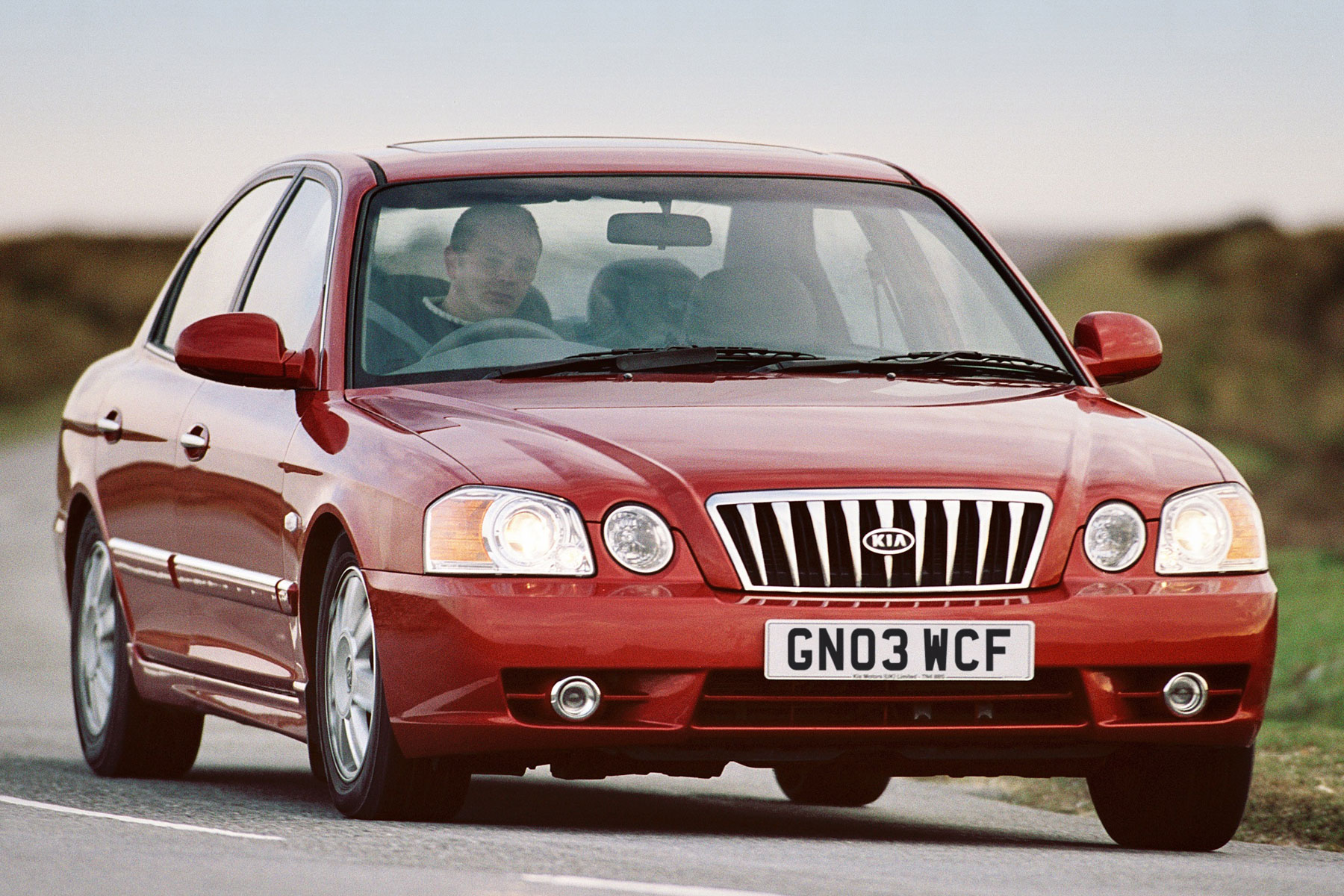
My last report on our Kia Optima long-termer was a smidgen on the heavy side, so I thought I’d have a bit of fun this time. Fun, for me, involves searching through old press pictures, and browsing Auto Trader for tidy examples of the Kia Magentis.
Why the Kia Magentis? Because that’s where the Optima’s origins lie. Indeed, what we know as the Magentis was actually sold elsewhere as the Optima, and was essentially a rebadged Hyundai Sonata. When the Magentis arrived in the UK in 2001, you could only get it with a 2.5-litre V6 petrol engine producing 168hp, for a price tag of £12,995. To put that in perspective: an entry-level Ford Mondeo 1.8 LX would have cost £14,595 at the same time – and if you wanted a V6 Mondeo, you’d be shelling out £19,095.
The press were fairly positive about the Magentis. In 2002, Auto Express praised its “thoroughly modern appearance,” along with its huge boot and high equipment levels. It concluded that “for the retired executive not looking to spend too much… the Magentis could be a tempting proposition.”
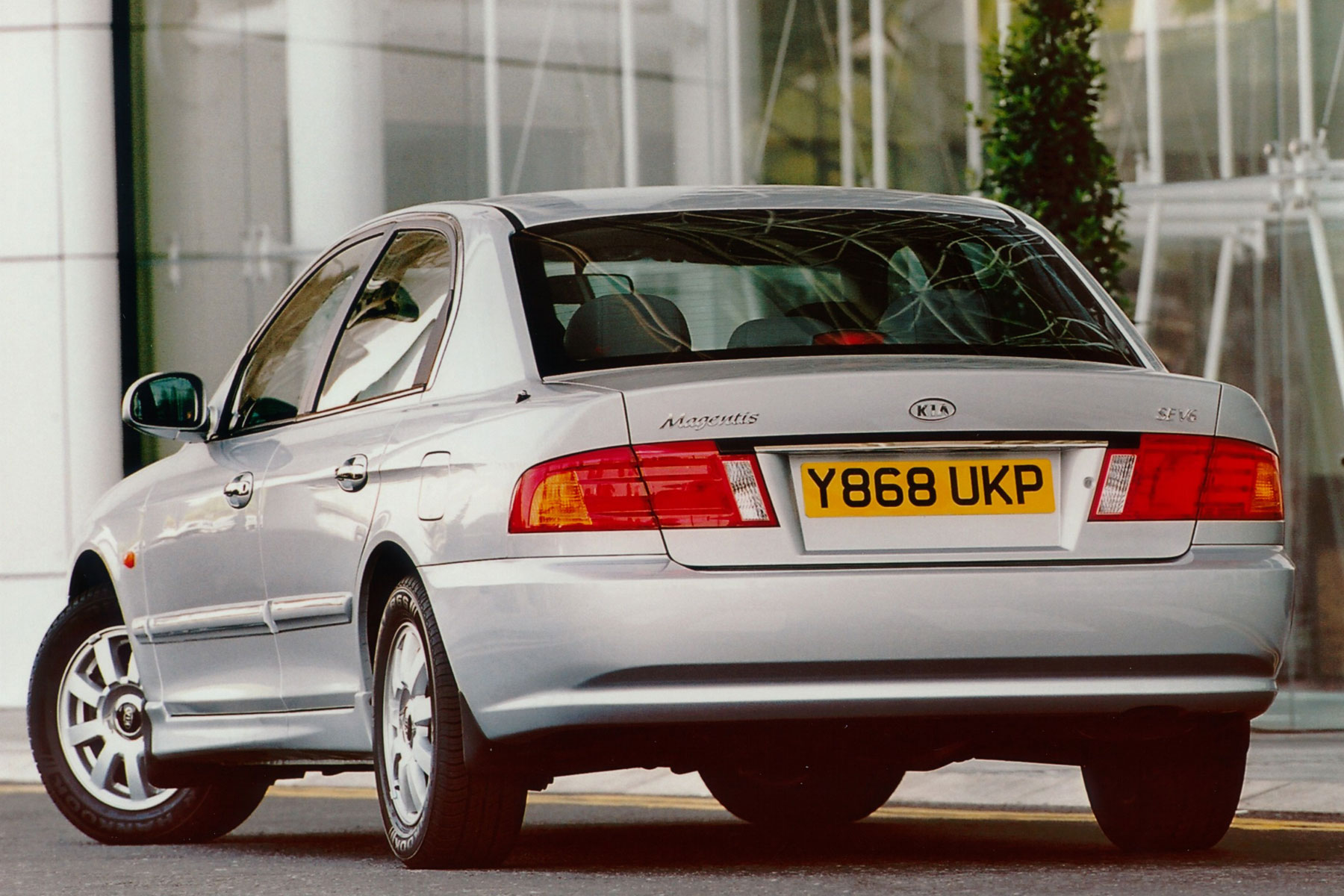
Customers were less convinced and, looking back today, it’s fairly easy to see why. Its looks haven’t aged well, while the interior feels particularly cheap and nasty. A search on Auto Trader reveals you can pick up an original Magentis for as little as £390, although there’s a limited number available.
Back in the early 2000s, Kia was very much a value alternative to mainstream car manufacturers in the UK. But today, although Kia and sister brand Hyundai still enjoy such a reputation, their cars aren’t quite the budget buys you’d expect. The Kia Optima starts at £21,635 in entry-level saloon guise, compared to £21,945 for a basic Mondeo – just £310 more.
Would you be daft to spend Mondeo money on a Kia? Our experience with the Kia suggests not. Its cabin is every bit as premium as the Mondeo’s and, while the driving experience isn’t quite a sharp, it probably beats it for long-distance comfort. Things have changed a lot since the 2001 Kia Magentis.
Report 3: should I be worried about buying a diesel Optima?
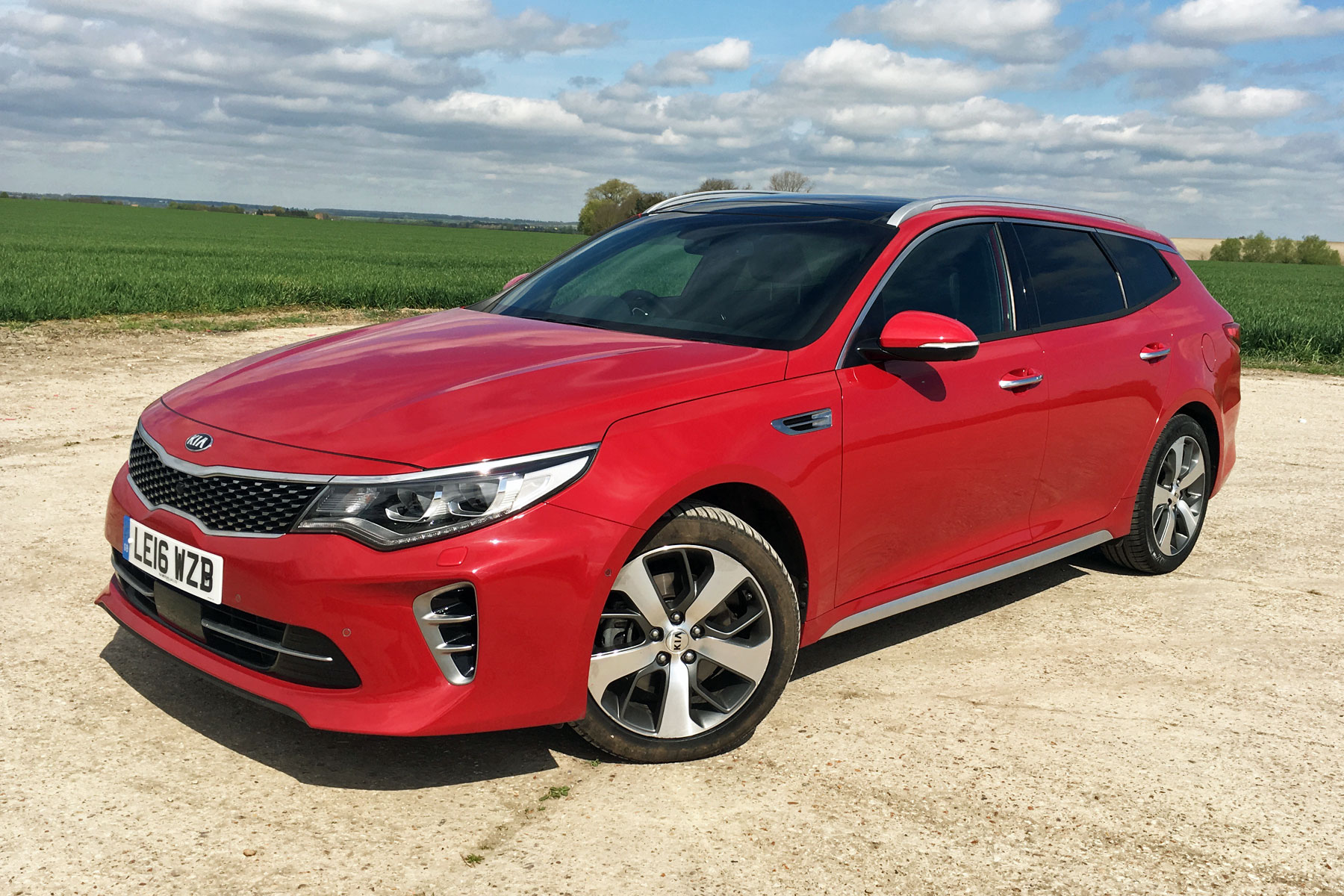
It’s funny how the tide can turn over a relatively short period of time. When we added the Optima to our fleet, its 120g/km CO2 emissions meant it’d have cost just £30 a year for private motorists to tax. Company car drivers, meanwhile, would have paid BIK tax at a rate of 24% (including a diesel surcharge of 3%).
Less than six months later, we’re now looking at £160 for the former, and 26% for the latter. The diesel BIK supplement for company car users was meant to be dropped in 2016, but the high-profile Volkswagen emissions scandal has contributed towards making the public more aware of the harmful non-CO2 emissions produced by diesel cars. This means company car drivers are likely to have to fork out an extra 3% in BIK tax for diesel cars until at least 2020.
It’s not just fleet users being hit, either. London is introducing an ultra-low emissions zone, which could be rolled out across other UK towns and cities. While our Euro 6-compliant Kia won’t be affected, drivers of older cars (diesels registered before 1 September 2015, mainly) will be subject to a £12.50 fee whenever they enter the congestion charge zone – no matter which day of the week or time of day.
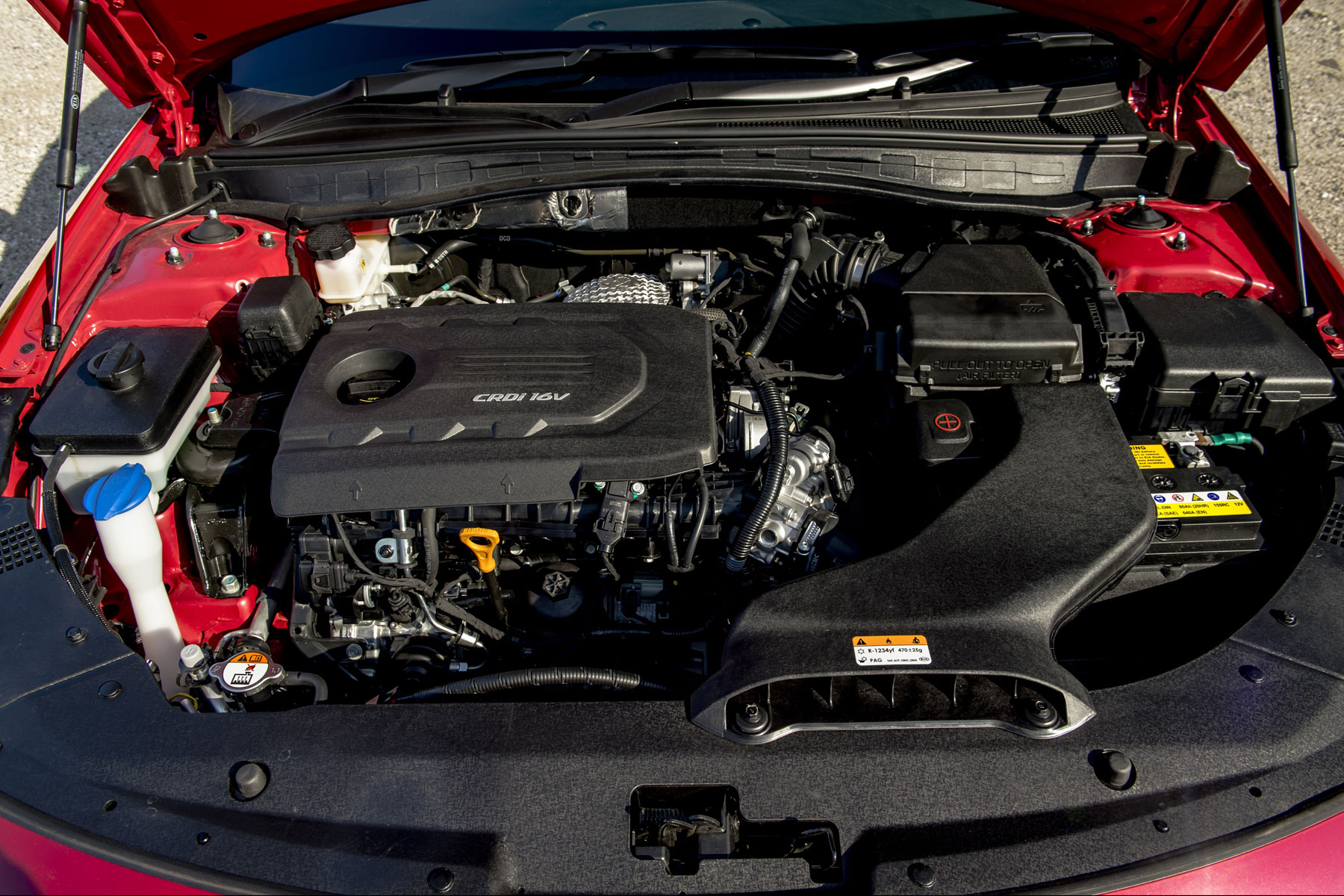
We’ve heard of diesel drivers being hit in other ways, too. Westminster Council is trialling charging diesel cars an extra 50% to park in certain areas, while Paris, Athens, Madrid and Mexico are all aiming to become diesel-free by 2025.
All these anti-diesel initiatives could also have an influence on residual values. That’ll hit whole-life costs and make diesels more expensive to lease for business users, while private buyers could be reluctant to invest in a new diesel car. Experts say they haven’t seen secondhand values hit so far, however.
In truth, you shouldn’t be too concerned about buying a new Optima diesel. Its Euro 6 compliancy means it’s about as environmentally-friendly as diesels come, and it’s excluded from London’s ultra-low emissions zone. Its 61.4mpg economy figure (for the automatic estate, as per our test car) should go a long way towards balancing out any extra costs incurred through parking and the like. Although, naturally, our day-to-day driving has found that figure drops to mid-40s around town.
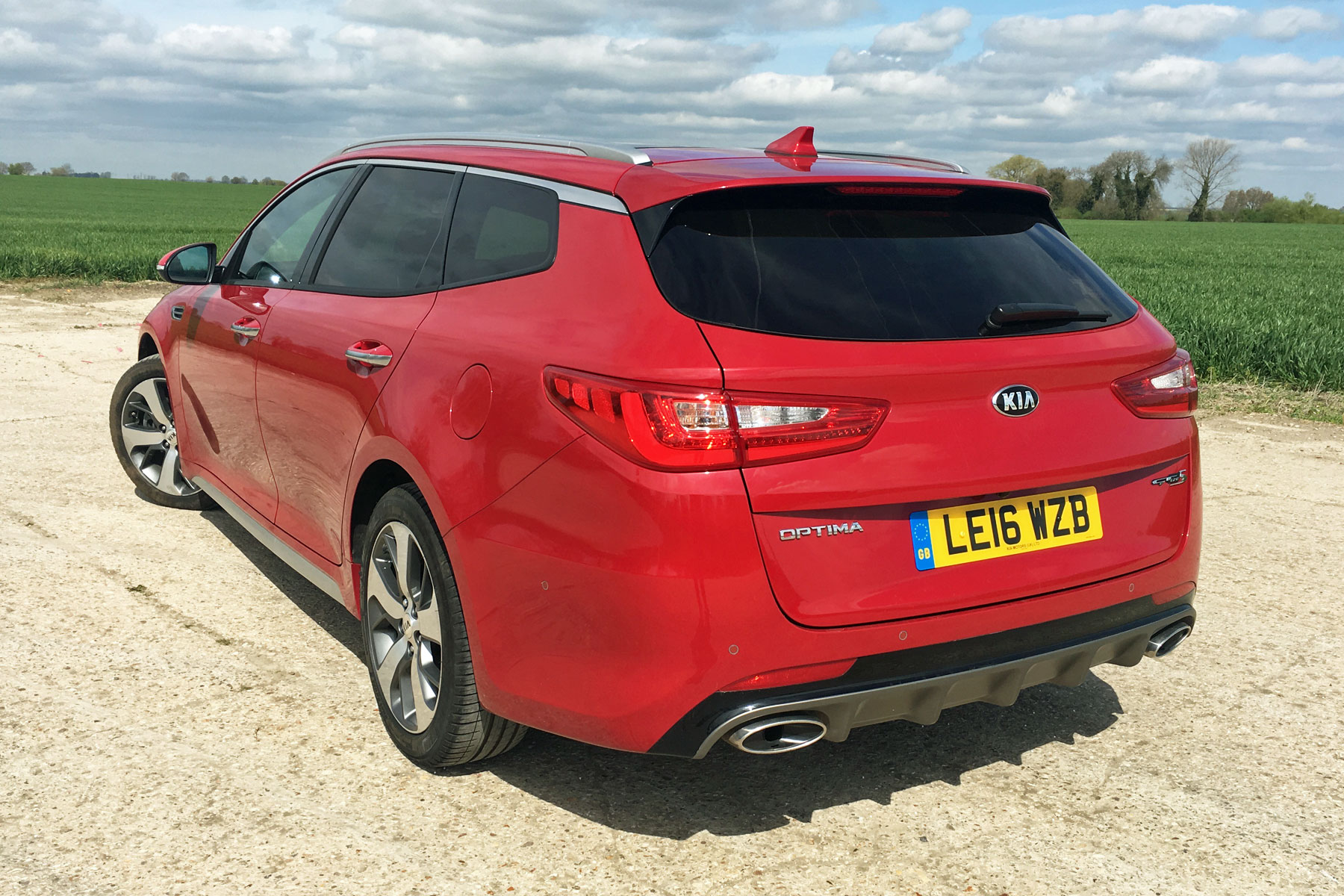
If you really don’t want to buy a diesel-powered Kia Optima, the firm has recently launched a plug-in hybrid version. It combines a 2.0-litre petrol engine with a 50kW electric motor, producing 205hp and returning an official fuel economy figure of 176.6mpg. Of course, our time with a Mitsubishi Outlander PHEV shows you’re unlikely to achieve anywhere near the claimed economy in a plug-in hybrid, unless you charge it regularly and only complete short journeys.
Still, the Optima PHEV’s 37g/km CO2 emissions put it in the 9% BIK tax bracket and drivers who visit London regularly will enjoy congestion charge exemption. Don’t expect a big discount in VED (vehicle excise duty – car tax), however. It’ll cost £130 a year after the first year, and the £33,995 list price (before government grant) is expensive – if cheaper than than a Volkswagen Passat GTE or Mitsubishi Outlander PHEV.
Report 2: everything we rate (and hate) about life with the Kia Optima SW

I’ve done a lot of miles in the Kia Optima since I introduced it to the MR long-term test fleet. I could write a lengthy piece about how good it was for driving to Wales for Christmas duties (hence the picture of it looking filthy above), how a Nordic Fir slotted into the boot and how it copes brilliantly with the daily grind, but you probably know all that. So I thought I’d do one of those trendy listicles about what I like and dislike about the Optima SW.
Good things about life with the Kia Optima SW
The seats are brilliant
OK, it might sound like a silly, minor thing. All cars have relatively comfortable seats, right, especially if you spend more than £30,000 on the top-spec leather-trimmed GT-Line variant? Well, yeah, but I eternally find myself aching after a long stint in pretty much any Volkswagen Group product (I think I’m the wrong shape for German seats). In the Optima, I’m as fresh as the proverbial daisy even after a slog of several hundred miles.
My mates like it
Yeah, this is an odd one. I’m a 20-something car writer type whose mates should appreciate Civic Type Rs and other hooligan specials. But, without fail, they love being driven about in the Optima. That’s probably because it feels safe and I don’t even bother trying to drive it fast. Also…
The sound system is really good
I’m no audio snob, but all grades of the Optima SW from the ‘3’ up feature a Harman Kardon sound system. The speakers (eight in total) do a commendable job of mimicking a premium car’s sound system. Combine this with Spotify through my phone (we’ll come onto that shortly…) and the Kia becomes a mobile disco.
The gearbox is slick
While rivals such as the Mazda 6 and Vauxhall Insignia stick with conventional automatic gearboxes, the Kia Optima gets a more upmarket dual-clutch transmission. This makes for faster gear changes – and it works brilliantly. Just don’t bother with ‘eco’ mode unless you’re motorway cruising (another thing I’ll come onto shortly).
It looks great
Finally, look at it. This doesn’t look like a downmarket offering – it attracts loads of admiring glances, especially in Temptation Red. While I’m not sure about the chintzy grille, the rest of it looks great – particularly from the rear.
Bad things about life with the Kia Optima SW
It likes a beep
Turn the ignition on without putting your seatbelt on and it beeps. Run low on washer fluid and it beeps. Drive in cold conditions and it beeps. Stand near the boot and it beeps (before the electronic tailgate, standard on the GT-Line S, starts opening). I find beeps infuriating yet Korean and Japanese cars love them.
The reversing camera gets muddy easily
At this time of year, cars get filthy pretty quickly. Normally I’m the sort who doesn’t bother cleaning their car over winter (what’s the point when it gets dirty again so soon), but the Optima’s reversing camera (standard on all models) and clever 360-degree around view monitor (standard on the GT Line S) means I’m having to clean the Optima almost weekly. The cameras get covered in the dirt extremely easily, and there’s no washer system like on some models.
The steering is too light
No, I don’t expect super-direct steering, but the Kia Optima’s steering is so light just keeping it on the straight ahead is a bit of an effort. Feedback is non-existent, while putting in sports mode makes things heavier but not particularly communicative. Talking of which: sports mode holds onto the revs for too long, while eco mode is frustrating – roundabouts particularly (“are you sure you want to pull out rapidly,” the car says, “think of the trees!”). Why can’t I have ‘normal’ mode with slightly heavier steering?
It has a puncture repair kit
I recently got a puncture in the Optima. I can’t really blame the Kia for that, but I can blame it for having a rubbish ‘tyre mobility kit’ that only worked long enough for me to limp seven miles to my nearest ATS Euromaster. Said ATS Euromaster were too busy to fit me in for a couple of days, meaning I had to abandon the Kia in their car park and get the train. Give me a full size spare any day.
There’s no Apple CarPlay… yet
I’m a huge fan of Apple CarPlay, and if I was a company car driver looking for an estate car to cover long distances, CarPlay would be high on the list of priorities. Curiously, the Optima Sportswagon is available with Android Auto but not Apple CarPlay. It’s on its way, apparently, but I do miss it on our long-termer.
Introduction: Kia Optima SW 1.7 CRDi GT-Line S estate
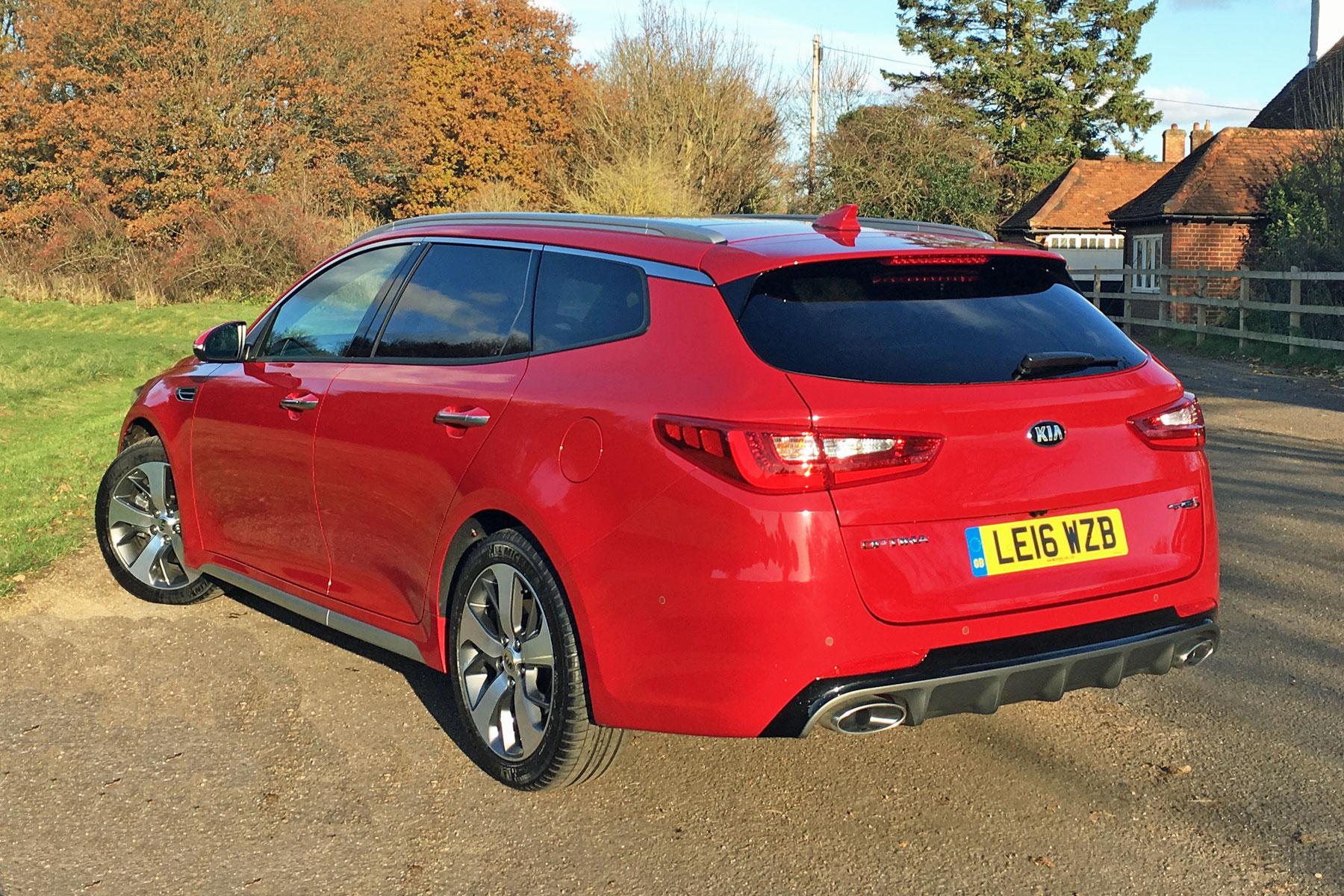
Car company bosses often seem ashamed to admit that they’re targeting company car drivers with a new model. The suggestion that private buyers won’t be stumping up their own cold, hard cash upfront for a car is frowned upon.
Kia’s different. It accepts that business users make up the vast majority of buyers in this segment – no one buys a new Ford Mondeo for themselves. More than 80% of Optima buyers will be business users, and that’s why it’s kept things simple, offering just two efficient engines.
You can pick from a 1.7-litre diesel (emitting 113g/km CO2, meaning 19% company car tax), or a plug-in hybrid (37g/km CO2). There’s no petrol, for now – although a high-performance GT is set to follow in 2017.
We’ve opted for the diesel and, out of the four models on offer, we’ve chosen the top-spec GT-Line S. This comes with a seven-speed dual-clutch automatic gearbox as standard (resulting in a rise in emissions to 120g/km). With a £30,595 price tag, is it an overpriced Korean estate or a genuine premium go-getter?
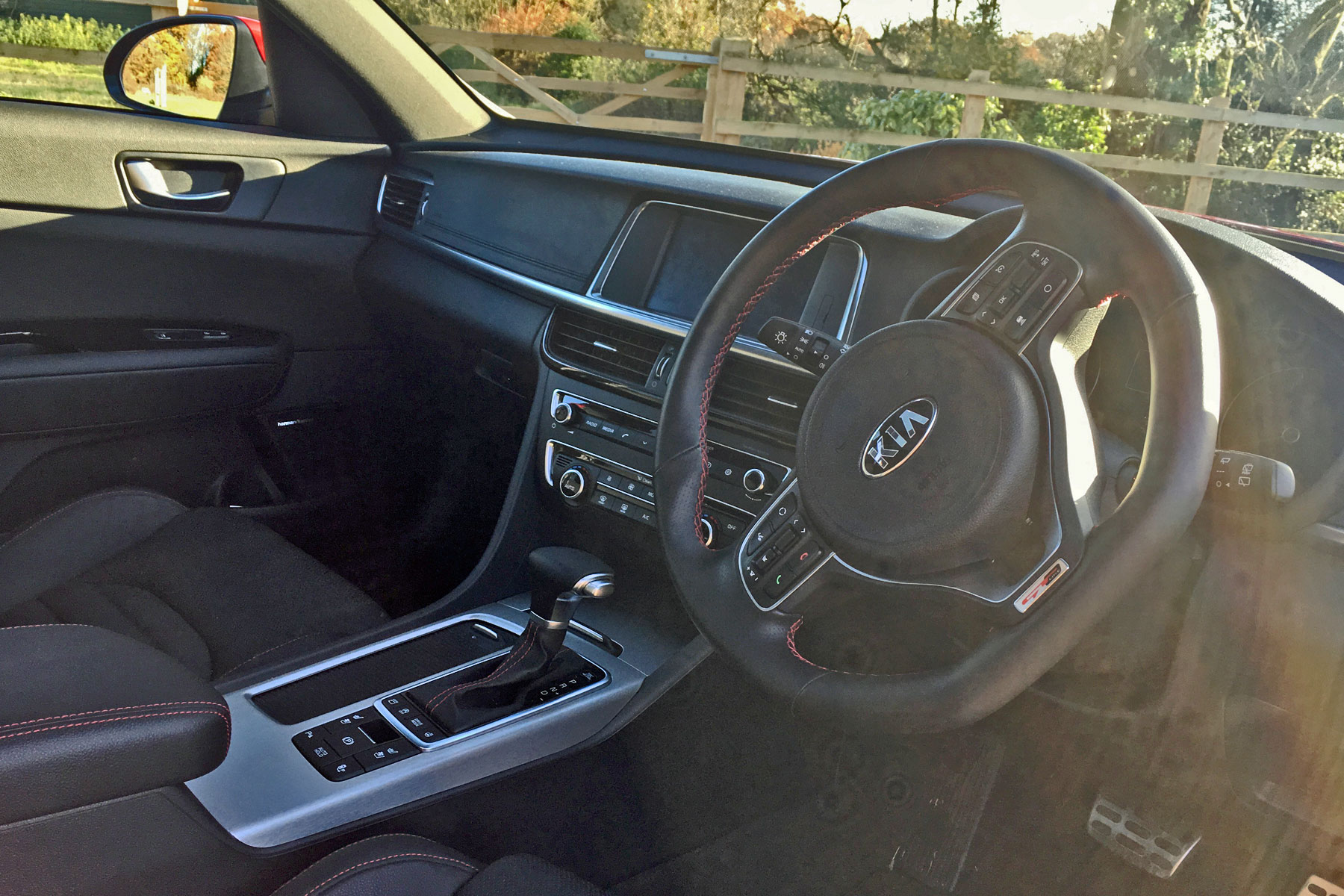
First impressions suggest this could be the car for shedding Kia’s ‘Asda Price’ image – it’s absolutely loaded with kit. Highlights include 18-inch alloys, an openable panoramic sunroof and an eight-inch touchscreen infotainment system incorporating sat-nav and Android Auto connectivity (but not Apple CarPlay, yet). It even has a wireless phone charger.
Oh, and there are plenty of comforts to make the upcoming winter months more bearable: think heated front and rear seats, ventilated front seats (er…), and leather upholstery with red stitching.
While the inside certainly does a good impression of a premium vehicle, the exterior makes many rivals look bland. With more than a passing resemblance to the concept on which it’s based, we’ve already noticed passers-by taking a second glance. That wouldn’t happen in a Skoda Superb.
Will our positive first impressions continue as we spend more time with the Kia Optima? We’ll be living with it for six months to find out.
ALSO READ
Norfolk sports car maker Zenos has gone into administration
Driving to France? You’re risking a fine if you don’t display this sticker

